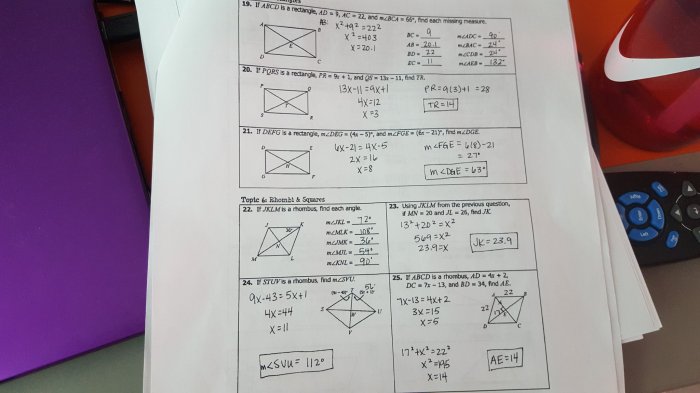Elementary differential equations with boundary value problems 6th edition – Elementary Differential Equations with Boundary Value Problems, 6th Edition, provides a comprehensive and engaging introduction to the fundamental concepts and applications of differential equations with boundary value problems. Written with clarity and precision, this textbook is designed to guide students through the intricacies of this challenging subject, equipping them with the tools and techniques necessary to solve complex equations and model real-world phenomena.
The textbook covers a wide range of topics, from basic concepts such as first-order equations and linear equations to more advanced topics such as systems of equations, partial differential equations, and numerical methods. Each chapter is carefully structured to build upon the previous material, ensuring a smooth and logical progression of knowledge.
1. Textbook Overview
Purpose and Scope:“Elementary Differential Equations with Boundary Value Problems, 6th Edition” provides a comprehensive introduction to the theory and applications of differential equations. It covers fundamental concepts, techniques, and applications in science, engineering, and other fields.
Target Audience and Prerequisites:The textbook is intended for undergraduate students in mathematics, science, and engineering who have a basic understanding of calculus and linear algebra.
2. Content Analysis
Chapter Overview:The textbook is divided into 12 chapters, each covering a specific aspect of differential equations.
- Chapter 1:Introduction and First-Order Equations
- Chapter 2:Second-Order Linear Equations
- Chapter 3:Higher-Order Linear Equations
- Chapter 4:Systems of First-Order Equations
- Chapter 5:Numerical Methods for First-Order Equations
- Chapter 6:Numerical Methods for Systems of First-Order Equations
- Chapter 7:Boundary Value Problems
- Chapter 8:Fourier Series
- Chapter 9:Partial Differential Equations
- Chapter 10:Sturm-Liouville Theory
- Chapter 11:Bessel Functions
- Chapter 12:Legendre Functions
Key Concepts and Topics:Each chapter introduces key concepts and topics, including:
- Methods for solving differential equations
- Boundary value problems
- Numerical methods
- Fourier series
- Partial differential equations
- Special functions
Logical Flow and Organization:The content is organized in a logical flow, building on concepts introduced in previous chapters. Each chapter begins with a brief overview and concludes with a summary and exercises.
3. Mathematical Methods
Techniques and Methods:The textbook introduces various mathematical techniques and methods, including:
- Separation of variables
- Method of undetermined coefficients
- Variation of parameters
- Laplace transforms
- Numerical methods (Euler’s method, Runge-Kutta methods)
Applications:These methods are used to solve differential equations and boundary value problems in various applications, such as:
- Modeling population growth
- Analyzing vibrations in mechanical systems
- Solving heat transfer problems
- Calculating fluid flow
4. Applications and Examples
Applications in Science and Engineering:The textbook highlights the applications of differential equations and boundary value problems in:
- Physics
- Chemistry
- Biology
- Mechanical engineering
- Electrical engineering
Case Studies and Examples:The textbook provides detailed examples and case studies to illustrate the practical relevance of the concepts discussed. These include:
- Modeling the growth of a bacterial population
- Analyzing the vibrations of a spring-mass system
- Solving the heat equation to determine temperature distribution
5. Pedagogical Features
Chapter Summaries:Each chapter concludes with a concise summary that highlights the key concepts and results.
Exercises and Practice Problems:The textbook includes numerous exercises and practice problems of varying difficulty levels. These problems reinforce the concepts and provide opportunities for students to apply their knowledge.
Supplementary Materials:The textbook is accompanied by a companion website that provides additional resources, including:
- Solutions manual
- Interactive simulations
- MATLAB and Python code
6. Comparison with Other Texts: Elementary Differential Equations With Boundary Value Problems 6th Edition
Strengths:“Elementary Differential Equations with Boundary Value Problems, 6th Edition” offers several strengths compared to other textbooks in the field:
- Comprehensive coverage of both theoretical and applied aspects
- Clear and accessible writing style
- Abundant exercises and practice problems
- Up-to-date coverage of numerical methods
Weaknesses:Potential weaknesses include:
- May be too comprehensive for some introductory courses
- Some exercises may be challenging for students with limited mathematical background
Suitability:The textbook is well-suited for:
- Undergraduate courses in differential equations
- Students with a strong foundation in calculus and linear algebra
- Instructors who seek a comprehensive and practical approach
User Queries
What is the target audience for this textbook?
Elementary Differential Equations with Boundary Value Problems, 6th Edition, is primarily intended for undergraduate students in mathematics, science, and engineering who are seeking a comprehensive introduction to differential equations.
What are the key features of this textbook?
The textbook is renowned for its clear and concise explanations,丰富的练习和示例, and a logical organization of content. It also includes chapter summaries, practice problems, and supplementary materials to enhance the learning experience.
How is this textbook different from other similar textbooks?
This textbook stands out due to its comprehensive coverage of both theoretical concepts and practical applications. It also emphasizes the use of technology to solve differential equations, making it a valuable resource for students pursuing careers in fields that require numerical simulations.


